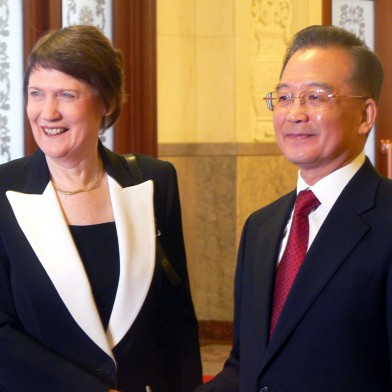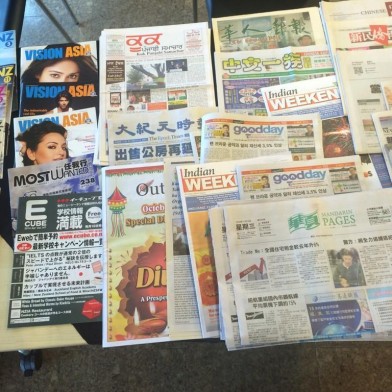An increasingly contested Asia, big data, “techno-authoritarianism” and declining liberalism – are these issues of significance that New Zealand journalists need to know about when covering Asia? Or are they just “intellectual broccoli”?
On February 9, the Asia Media Centre held “Setting the Scene for 2018”, bringing together more than 40 journalists, academics and others at the Asia New Zealand Foundation's Wellington office to discuss the New Zealand media’s coverage of Asia.
The event was designed to help journalists gain valuable context that would support their reporting of Asia issues in 2018 – and to highlight experts who could talk about developments in the region. The academics in the room were able to learn more about the process of news selection and the constraints faced by journalists in their coverage of Asia.
Throughout the day, the role of China in determining regional dynamics was highlighted – including the evolving controversy around Chinese Communist Party influence in New Zealand.
Fran O’Sullivan (NZME) described the rise of China as the story of her age. That story wasn’t just about China and the United States – it was also increasingly about “our own backyard” – the Pacific.
The Asia New Zealand Foundation’s Pip McLachlan pointed to China’s advances in electronic payment methods – and the implications for big data – as a development that had potential to have major impact on ordinary lives but that wasn’t getting discussed much. Manjeet Pardesi (Victoria University of Wellington) linked “techno authoritarianism” to the regional decline of liberalism.
Reuben Steff (University of Waikato) warned that advancing technology would pose particular challenges in non-liberal countries as increased automaton caused job losses.
Sharyn Graham Davies (Auckland University of Technology) said many people thought of terrorism as the biggest threat in Indonesia but social justice issues – particularly declining liberalism around LGBT issues – presented challenges for the country.
Another issue was what McLachlan described as a more contested Asia. Regional tensions could present challenges to New Zealand’s multilateral approach to the region – China’s Belt and Road was a significant example of a bilaterally-focused vision for regional development.

Asia New Zealand Foundation's Pip McLachlan (right) leads a panel discussion with Fran O'Sullivan, Alex Tan and Manjeet Pardesi on contemporary media coverage of Asia.
Other signs of increasing contest in the region included the re-emergence of the “Indo-Pacific” and the “Quad.” In part, panellists linked the rise of those concepts to the growing regional assertiveness of Japan under Prime Minister Shinzo Abe. Japan’s leadership was likewise instrumental to the survival of the CPTPP.
Mediawatch’s Colin Peacock led a discussion about crises and emerging issues in the region. Graeme Acton, foreign news editor for RNZ, shared insights into how New Zealand newsrooms covered crisis issues. He pointed out that while many of the issues being discussed were important ones, they could be described as “intellectual broccoli”, making it difficult for media to gain audience interest.
The day identified a list of fairly daunting list of challenges faced by New Zealand media in their coverage of Asia. Journalists need New Zealand commentators to be agile in responding to interview requests – but the University of Canterbury’s Professor Alex Tan spoke of a critical shortage of New Zealand academics in relation to certain Asian countries and subjects. This is a challenge the Asia Media Centre has already encountered – for instance, in searching for people to talk about the deteriorating state of democracy in Cambodia, or on social issues in Vietnam.
Other panellists pointed out New Zealand’s relative lack of think-tanks, and patchy engagement between government, academics and journalists. These barriers made it harder for journalists to access up-to-date context – and they often turned to third country sources (e.g. US State Department and Australian Department of Foreign Affairs and Trade) for briefing documents.
But the panellists also identified ways to gain a better understanding of the region – including consuming domestic news sources in Asia. Several people spoke of the importance of building relationships – for instance, between journalists in New Zealand and in Asia, and between experts and journalists within New Zealand.
Indian Weekender Editor Sandeep Singh chatting to fellow journalists at Setting the Scene for 2018.
The last panel of the day focused on opportunities for mainstream media to collaborate more with “ethnic minority media” in their reporting of Asia. While large media organisations have entered some partnerships with ethnic media, the potential goes beyond coverage of breaking news events to commentary and analysis of issues – as Indian Weekender editor Sandeep Singh has pointed out. Eric Chuah, of migrant social research enterprise Cultural Connections, spoke of the value of social media in enabling mainstream media to access a greater diversity of perspectives.
For the Asia Media Centre, the event proved a useful starting point for identifying topics to focus on in 2018, and ways we might better support New Zealand journalists in their coverage of Asia. We were pleased to see participants go home with new contacts and story ideas – and will plan future events based on themes identified by participant feedback.
– Asia Media Centre

